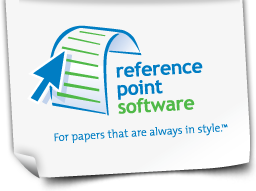MLA Citation Format for Other Likely Sources
Using the MLA citation format for traditional print, periodical and electronic sources is relatively well known but what about sources other than those three common types? How would you follow the style guidelines for those sources? LetΓÇÖs look at some different types of sources and examine them under the MLA citation format.
Personal Interviews and Oral Histories
Interviews conducted between yourself and another person and oral histories are the same thing. Begin by listing the name of the interview by the name of the person being interviewed, the last name first then the first name followed by a descriptive phrase such as ΓÇÿpersonal interviewΓÇÖ followed by the date of the interview. Example: Jones, Bob. Personal interview. 12 Aug. 2000.
Speeches, Lectures, and Conferences
You may find yourself sitting in on a speech or a lecture or perhaps a conference, and there will be no record other than the one you create. When following the MLA citation format, give the speakerΓÇÖs last name followed by the first name and then the title of the event in quotation marks. Next, put the location of the event, the date of the event, and the type of presentation. Example: Phillips, Sandra. Nursing in the African Deserts. Hyatt Regency, New York. 1 Aug. 2000. Lecture.
Surveys and Questionnaires
When you cite a survey or questionnaire in your paper, put down the name of the person conducting the survey with the last name first, the first name last, followed by the name of the survey in quotation marks. Next, identify it as a survey or questionnaire followed by the date, the survey, or questionnaire was conducted. Example: Smith, John. ΓÇ£Pro-Life or Pro-Choice.ΓÇ¥ Questionnaire. 1 Aug. 2009.
If you need help citing surveys and questionnaires our MLA software can help. Take a stress-free approach to proper survey and questionnaire citations.
Personal Letters
If you find that you may need to cite a personal letter in your paper, you should begin with the writerΓÇÖs name, the last name first, first name last. Then, insert the phrase ΓÇÿLetter to the authorΓÇÖ, followed by the date the letter was received. Lastly, type ΓÇÿTSΓÇÖ which means typed letter or ΓÇÿMSΓÇÖ for manuscript or handwritten. Example: Phelps, Barnaby. Letter to the author. 1 Aug. 2010. MS.
Manuscripts
You may find yourself wanting to cite an unpublished manuscript. The MLA style guidelines require that you give the author, a title or description of the manuscript, and the date it was written, followed by the abbreviation ΓÇ£MSΓÇ¥ for handwritten or ΓÇ£TSΓÇ¥ for typescript. Add the name and location of the place that houses the material. Example: Williams, Jim. Fly Fishing in The Rockies. 1st draft. 1 Aug. 2000. TS. The University of Texas.
A Painting, Sculpture or Photograph
In the case of referencing artwork, list the artistΓÇÖs name, the last name first, the first name last, followed by the name of the artwork in italics. Then, provide the date of the artwork if known, or if not known, the abbreviation n.d. instead of the date. Give the medium and the name of the place the artwork is to be found and its location. Example: Monet, Claude. Poplars at Giverny, Sunrise. 1888. Oil on canvas. The Museum of Modern Art, New York, NY.
If you are citing a photographic reproduction of artwork such as photographs in a book, the MLA citation format states that you need to cite the artwork first, as above, and then add the information that relates to the source that the photograph appears in the book, including the page and reference if there is one, such as plate, or figure. Remember that book titles appear in italics, too. Example: Monet, Claude. Poplars at Giverny, Sunrise. 1888. The Museum of Modern Art, New York, NY. Gardener’s Art Through the Ages. 10th ed. By Richard G. Tansey and Fred S. Kleiner. Fort Worth: Harcourt Brace. 2004. 939. Print.
We can help ensure that you follow all of the MLA style guidelines by using our formatting software. It will make it easier to produce your work formatted correctly while saving time in the editing process enabling you to spend your time on more creative aspects of your paper.
For more information about APA or MLA formats, contact us today.
David Plaut is the founder of Reference Point Software (RPS). RPS offers a complete suite of easy-to-use formatting template products featuring MLA and APA style templates, freeing up time to focus on substance while ensuring formatting accuracy. 
Reference Point Software is not associated with, endorsed by, or affiliated with the American Psychological Association (APA) or with the Modern Language Association (MLA).
Tags: college mla template, mla writing, reference point software
